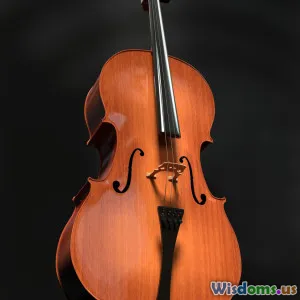
Top Five Tricks for Fluid Character Animation
9 min read Unlock the secrets to mastering fluid character animation with these five expert techniques for smoother, more lifelike motion. (0 Reviews)
Top Five Tricks for Fluid Character Animation
Introduction
Animation is more than just drawing frames one after another; it’s about breathing life into static images, making characters move naturally and telling stories through motion. Fluid character animation—where movements look smooth, believable, and impactful—is the hallmark of masterful animators and top studios worldwide. Are you struggling to make your character’s motions feel authentic? Or perhaps your animations appear stiff or mechanical? This article unveils the top five tricks that industry professionals use to create seamless and fluid character animations that captivate audiences.
Whether you're an aspiring animator or a seasoned artist looking to refine your craft, these expert strategies will deepen your understanding and elevate your animation work. Let's dive into the core techniques behind fluid animation and bring your characters to life like never before.
1. Master the Art of Motion Arcs
One of the foundational principles in animation—and crucial for fluid motion—is the concept of arcs. Natural movement rarely happens in a straight line. Instead, limbs and bodies follow curved trajectories known as arcs.
Why Arcs Matter
Motion arcs help convey organic, flowing movement, whether it is a hand waving or a character running. Straight-line motions come across as robotic or unnatural, breaking the illusion of life in your animation.
Example: Traditional animators from studios like Disney emphasize 'drawing the path of action' when planning a character’s motion. In "Snow White and the Seven Dwarfs," subtle arcs in the princess's gestures create grace and believability.
How to Implement Arcs
- Analyze real-life movement: Observe people walking, throwing, or turning, noting the curved paths joints follow.
- Visualize arcs: Before animating, sketch or visualize arcs for hands, legs, head movements.
- Use software tools: Most animation software (e.g., Adobe Animate, Toon Boom Harmony, Blender) allow visualization of motion paths. Review and refine these to ensure smooth curves.
Applying the arc principle creates a rhythm in the motion and leads to smoother transitions between key poses.
2. Perfect Timing and Spacing
Timing and spacing refer to the placement of frames and the amount of movement between them. These elements affect how fast or slow motion appears and influence the perceived weight and personality of the character.
The Science Behind Timing
Consider the physicist’s insight: timing equals speed. Fewer frames between key poses equal faster movement, and more frames equate to slower actions. The great Disney animator Frank Thomas described timing as "the most important element of animation."
How Spacing Controls Fluidity
Spacing affects acceleration, deceleration, and rhythm. Evenly spaced frames produce uniform motion, while variable spacing can suggest anticipation, easing in/out, or impacts.
Example: Pixar’s "Toy Story" uses varying timing and spacing to convey different emotions—Woody’s swift reaction vs. Buzz Lightyear’s confident, smooth walk.
Practical Tips
- Utilize easing: Slow in and slow out help mimic natural acceleration and deceleration.
- Add anticipation: A slight pose before major actions builds expectation and smooths transitions.
- Experiment with frame rates: Try adjusting the number of in-betweens around key poses.
Mastering timing and spacing anchors character motion in realistic territory and maximizes emotional impact.
3. Embrace Overlapping Action and Follow-Through
In real life, different parts of the body move at different times. Overlapping action and follow-through acknowledge this by staggering movement, preventing stiff animations.
Understanding the Concepts
-
Overlapping Action: Different parts initiate or stop movement at slightly different times. For example, when a character raises an arm, the fingers and cloth might lag behind.
-
Follow-Through: After a character stops, loose parts like hair or clothing continue to move and settle.
Legendary animator Richard Williams highlights that without overlapping, movements feel artificial.
Applying Overlapping and Follow-Through
- For a running character, the torso might stop quickly, while the arms swing longer.
- When a character jumps and lands, the coat or hair should continue moving after the landing impact.
Overlapping action adds complexity and believability by mimicking physics, making animations richer and more polished.
4. Include Subtle Secondary Motions
Small, secondary animations enhance fluidity by mimicking natural behavior. These are minor movements aside from the primary action, adding layers and realism.
What Are Secondary Motions?
These are less obvious gestures like breathing, blinking, shifting weight, subtle facial expressions, or finger twitches. They prevent frozen, lifeless characters.
Example: Studio Ghibli films masterfully use secondary animation, such as the rustling of clothing or slight head tilts during dialogue.
Why It’s Essential
Even tiny actions communicate life and emotion. Without secondary motions, characters can appear unnatural despite smooth primary movements.
How to Add Them Thoughtfully
- Avoid overdoing; subtlety is key.
- Tie secondary motions logically to the character’s mood or environment.
- Use high frame rates for secondary motions to maintain smoothness.
Secondary motions are the finishing touches that elevate animation from good to outstanding.
5. Study and Reference Real-Life Movements
A well-worn secret in the animation community is: there's no substitute for good references.
The Power of Observation
Natural motion is complex. Using video footage, live models, or going out to observe people helps animators understand nuances such as weight distribution, balance, and muscle behavior.
Case Study: Animators on "Avatar" extensively used motion capture and studied human and animal movements to create believable CG characters.
How to Use References Effectively
- Identify key frames and poses from real footage.
- Understand the physics behind motion, e.g., inertia and momentum.
- Use references not to copy but to inspire and inform your interpretation.
References keep animation grounded in reality, ensuring that your characters’ movements connect emotionally with viewers.
Conclusion
Creating fluid character animation requires precision, observation, and mastery of nuanced principles. By focusing on motion arcs, timing and spacing, overlapping action, secondary motions, and leveraging real-life references, animators dramatically improve the naturalness and expressiveness of their work.
These methods have been time-tested in legendary animated films and continue to underpin modern animation studios’ success. Embrace them in your own projects to captivate audiences with lifelike characters whose movements tell powerful stories.
Animation is a craft that feeds on passion and meticulous artful execution—may these five tricks be the stepping stones for your next fluid animation masterpiece.
Further Reading and Resources:
- "The Animator’s Survival Kit" by Richard Williams
- Disney’s Principles of Animation (https://disneyanimation.com/principles)
- Pixar’s RenderMan behind-the-scenes videos
- Online platforms offering animation courses like Animation Mentor or School of Motion
Rate the Post
User Reviews
Popular Posts



















